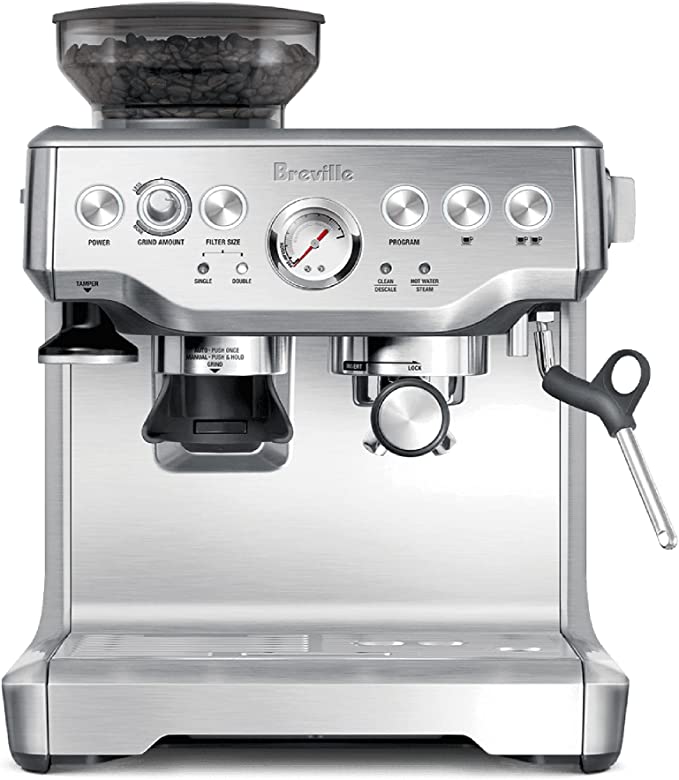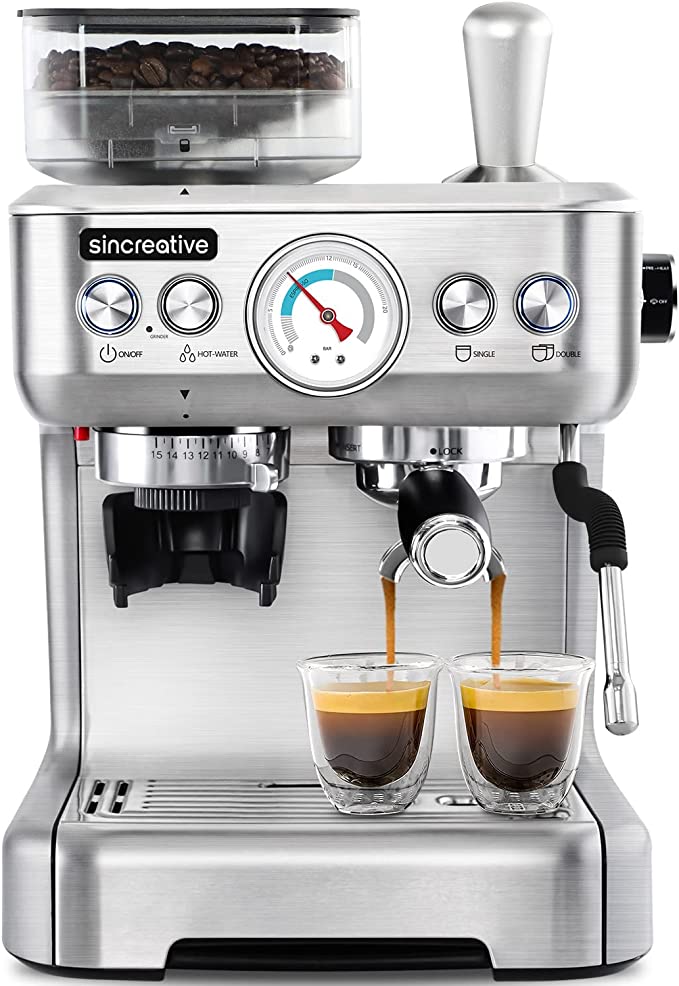CERA+ PCM01: Your Pocket-Sized Portal to Perfect Espresso Anywhere
Update on June 9, 2025, 9:04 a.m.
Imagine standing on a mountain summit at dawn. The air is thin, crisp, and charged with the silence of the wilderness. Below, a sea of clouds blankets the world you left behind. It is a moment of profound, soul-stirring beauty. And in such a moment, a primal, deeply human craving can surface: the desire for a small, perfect cup of espresso. Not just any coffee, but a true espresso—a syrupy, intense shot crowned with a thick, hazelnut-hued crema.
For decades, this desire has been tethered to place. It belonged to the clatter of the corner café, the hiss of a chrome-plated machine bolted to a granite countertop. It was a ritual of civilization, heavy and immovable. To want an espresso on a mountaintop was a fool’s errand. Why? Because that sublime little cup is not a simple brew; it is a feat of engineering, a violent, precisely controlled event. And for a long time, the physics of it all simply refused to be packed into a backpack.
This is the story of how that is changing. It’s a story about the relentless human quest to untether our rituals from their anchors, and the science that makes it possible. It’s a story that leads us to a device like the CERA+ PCM01 Portable Espresso Maker, a compact cylinder that appears to defy the very laws that have long governed a good coffee.

A Brief History of Pressure
To understand the engineering magic inside the PCM01, we must first travel back to post-war Italy. Before 1947, “espresso” was a different beast, often brewed with steam at low pressures of around 1-2 bars, resulting in a coffee that was strong, but often bitter and lacking the rich texture we now expect. Then, an inventor named Achille Gaggia had a revolutionary idea. By using a spring-loaded piston, he could force hot water through the coffee grounds at an unprecedented 9 bars of pressure or more.
The result was miraculous. This immense force didn’t just extract flavor; it emulsified the microscopic oils within the coffee beans, creating a stable, persistent foam. He called it crema. Gaggia didn’t just invent a new machine; he redefined espresso itself. From that moment on, high pressure became the non-negotiable secret code to unlocking a true espresso.
This created the fundamental challenge for anyone dreaming of portable espresso: how do you replicate the force of Gaggia’s industrial-sized lever machine in something you can hold in one hand? The first wave of solutions, like the iconic Moka pot, were brilliant but remained low-pressure systems. The next wave brought manual, hand-pump devices, a clever step forward. But they demanded significant physical effort and often suffered from inconsistent pressure, the enemy of a repeatable, perfect shot. This brings us to what we might call the third wave of portable coffee: the era of battery-powered automation, where the PCM01 resides.

Cracking the Espresso Code
At its heart, brewing espresso is about mastering three critical variables: pressure, temperature, and grind. The PCM01’s design is a fascinating study in how a modern device chooses which variables to automate and which to entrust to the user.
The Fist of Pressure: The most difficult variable to tame is pressure. The PCM01’s core innovation is a miniature, battery-powered electric pump engineered to produce up to 15 bars of pressure. Imagine this force not as a gentle flow, but as an invisible, hydraulic fist. In the mere 30 seconds of extraction, this pressure performs several crucial tasks. It overcomes the immense resistance of a tightly packed puck of fine coffee grounds. It forces water into contact with every single particle, ensuring a rapid and even extraction. And most importantly, it generates the intense shear forces needed to create that velvety crema, the signature of a genuine espresso. By automating this with an electric motor, the device removes the guesswork and physical strain, delivering a consistent force profile every single time. This consistency is the key to repeatability.
The Switch of Temperature: Here, the engineers made a deliberate, and brilliant, trade-off. The PCM01 is a non-heating device. This might seem like a limitation, but from a scientific and user-empowerment perspective, it’s a feature. Heating water is by far the most energy-intensive task a portable device can perform. By offloading this duty, the 1800mAh battery can dedicate its entire energy reserve to its primary mission: running the pump. This is why it can achieve a claimed 100 cups on a single charge—it’s not wasting precious watt-hours on thermals.
More profoundly, it hands control of the flavor’s “master switch” to you. Add water just off the boil (around 92-96°C), and you’re set for a classic, balanced extraction. Use cooler water, and you can explore the smoother, sweeter, and less acidic world of cold brew espresso. The device becomes a platform, and the water temperature your primary tool for flavor exploration.

A Look Under the Hood: Anatomy of a Pocket Rocket
If we were to virtually disassemble this 1.1-pound (500g) cylinder, we’d see a marvel of design efficiency.
The “heart” is the compact electric pump, a testament to miniaturization. It’s connected to the “power plant,” a rechargeable Lithium-Ion battery chosen for its high energy density. The “skeleton” is a combination of lightweight aluminum alloy and food-grade ABS plastic. The choice of materials is critical. The aluminum provides structural rigidity to withstand the internal pressures, while the ABS (Acrylonitrile Butadiene Styrene) is selected for its thermal stability and, crucially, its safety. “Food-grade” is not a marketing buzzword; it’s a safety standard ensuring that under the stress of heat and pressure, no harmful chemicals like BPA will leach into your coffee.
Finally, there’s the “brain”—or perhaps its “universal handshake”—the dual-adapter system. With a simple swap of baskets, the device is ready for either pre-packaged NS (Nespresso-compatible) pods for ultimate convenience, or your own ground coffee for ultimate control and freshness. This acknowledges that the modern coffee lover lives in both worlds: the one of hurried efficiency and the one of considered ritual.
The Lab is Open: You Are the Scientist
This is where the relationship with the PCM01 truly transforms. It is not an infallible black box. It is a portable laboratory, and you are the lead scientist. This perspective is the key to mastering the device and understanding its nuances.
Consider the user feedback. Some report “weak shots.” A scientist doesn’t see this as a machine failure, but as inconclusive data from an experiment. The cause is almost certainly a variable under user control: Was the coffee grind too coarse, allowing water to pass through too quickly (a phenomenon known as channeling)? Was the dose of coffee too low? Was the water temperature insufficient? The PCM01 provides the constant (pressure); your job is to dial in the variables.
Another piece of feedback mentions “leaks.” In a system generating pressures that can exceed that of a truck tire, sealing is a monumental engineering challenge. A slight leak if the chamber isn’t screwed on with absolute tightness isn’t just a flaw; it’s a powerful reminder of the immense forces at play inside this small object. It commands respect for the physics involved.
Your first brew, then, is your first experiment. Start with a fine grind, like table salt. Use a consistent dose. Ensure your water is hot. Tighten everything securely. Press the button and watch the science unfold. If the result isn’t perfect, don’t blame the lab equipment. Change one variable—grind a little finer, perhaps—and run the experiment again. This is the path to mastery.

Conclusion: The Fourth Place in Your Pocket
Sociologist Ray Oldenburg coined the term “third place” to describe the vital social environments separate from our two primary ones of home and work—places like cafés. They are the anchors of community life. In our increasingly mobile, untethered world, a new need is emerging: a “fourth place.” This isn’t a physical location, but a personal, mobile bubble of comfort and ritual that we can deploy anywhere to ground ourselves.
A device like the CERA+ PCM01 is more than a travel gadget; it is a tool for creating this fourth place. It’s the ability to pause on a windy coastline, during a layover in a soulless airport, or in the middle of a chaotic workday, and perform a small, precise ritual that results in something genuinely beautiful.
By placing the power of a café-style espresso machine into a portable form, it does more than just brew coffee. It empowers us to inject a moment of personal luxury and scientific precision into the unpredictable landscapes of our lives. The ultimate question it poses is not about convenience, but about what it means to carry our most cherished rituals with us. What happens when the café is no longer a place you go to, but something you carry in your hand?







































